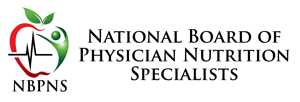Novel Neonatal Nutritional Notes
INFANT FORMULA UPDATE
I. Term, newborn:
A. Cow-milk based (low & high Fe):
Similac
Enfamil, etc
B. Soy based:
Isomil
Prosobee, etc
Issues:
1. Protein quality – intolerance
2. Iron
3. Carbohydrate
4. Mineral availability
5. Caloric density, basic composition
What about Iron…any place for “low” iron formulas?
- Iron deficiency anemia is bad! – associated w/ longterm cognitive deficits
- Modest dietary requirement x 4-6 mo ( \ don’t have to initially provide high Fe formula)
- Current levels of fortification (12 mg/L) excessive? Probably could do as well w/ 6-8 mg/L;
- Lower level – 4 mg/L going to be new lower limit (some proponents favored 0!)
- Best choice for breastfed infants…effects on gi flora, other mineral absorption
Committee on Nutrition, American Academy of Pediatrics “Iron Fortification of Infant Formulas” (7/99)
- All infants not breastfed or partially breastfed, should receive Fe-fortified formula (4-12 mg/L) from birth through 12 mo
- Discontinue manufacturing of formulas w/ < 4 mg/L
- Labels for low iron formulas should read “nutritionally inadequate”; d/c term on label “with iron”
- Educate parents, physicians re lack of negative side effects (gi, colic, etc)
Soy based formulas: Committee on Nutrition, American Academy of Pediatrics “Soy Protein-based Formulas: Recommendations for Use in Infant Feeding” (1/98)
- Safe, no advantage over cow milk based formulas for breastfed infant
- Indications: galactosemia, hereditary lactase deficiency
- Vegetarians
- Secondary lactose intolerance
- No value in prevention/management of colic
- Not recommended for preterm infants (< 1800 g)
- No value in prevention/management of atopic disease
- Infants w/ cow milk protein enteropathy/enterocolitis should not be given soy formula (high degree cross-reactivity)
- Infants w/ IgE mediated allergy to cow milk protein will often do well on soy formula
C. Variations on the theme
1. Lactose free (Lactofree, Similac Lactose Free)
- Post gastroenteritis?
- Colic?
2. Added rice (Enfamil AR)
- Anti-reflux – data?
3. Diarrhea formula/Dietary fiber (Isomil DF)
4. In-store brands
- Old formulations, limited R&D, no professional support
- Meeting Infant Formula Act standards reflects only amounts of nutrients; no implications for forms of nutrients (e.g. protein, fat blend, etc) or other immunologic factors (nucleotides)
A. Indications
Semi-elemental formulas
- Protein intolerance/Allergic reactions
- Malabsorption
B. Composition (infant vs > 1 yr)
- Protein hydrolysate (peptides + some free amino acids)
- Fat – MCT vs LCT; total fat (50 vs 30%)
- CHO – (Glucose polymers, sucrose)
C. Examples:
- Nutramigen
- Pregestimil
- Alimentum
- Peptamen Jr – not intended for infants (fat 30% of kcal)
Elemental
A. Indications
- Protein intolerance/allergic reactions
- Malabsorption
B. Composition: Free amino acids +/- MCT; % kcal fat
C. Examples:
- Neocate
- Pediatric Vivonex
- Neocate 1 +
- EleCare
Expense is directly (exponentially?!) proportional to degree of specialization!!
Preterm formulas
- Higher protein, micronutrient levels
- Higher caloric density
- C. Higher MCT
- Human milk fortifier
Preterm follow-up formulas – (between term & preterm)
- Neosure, Enfamil 22
- Energy & Nutritional composition intermediate between preterm & standard formulas
